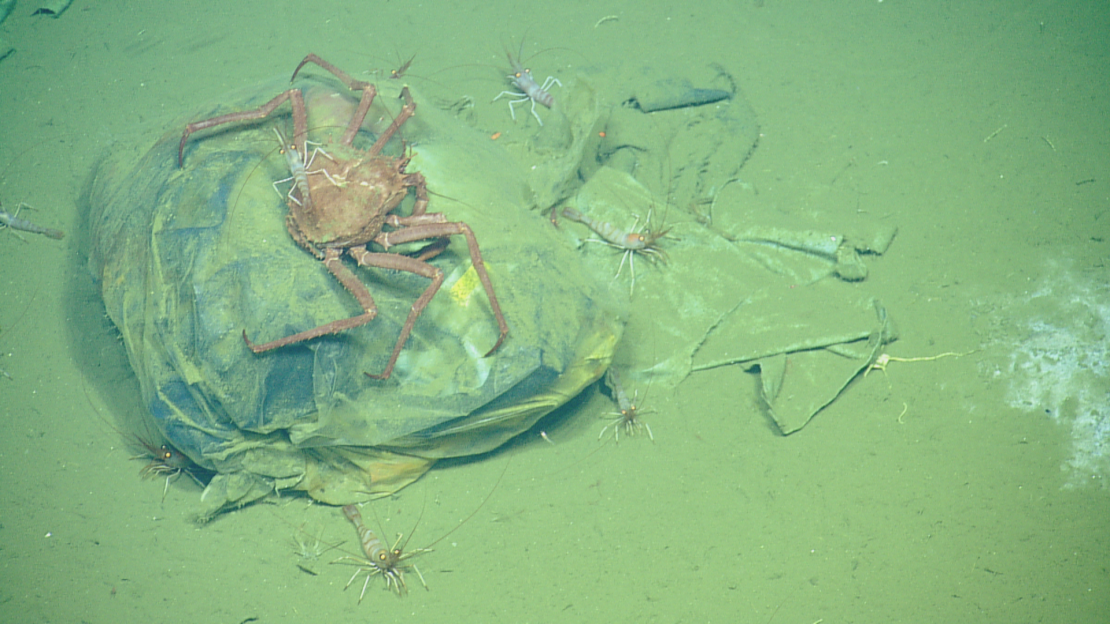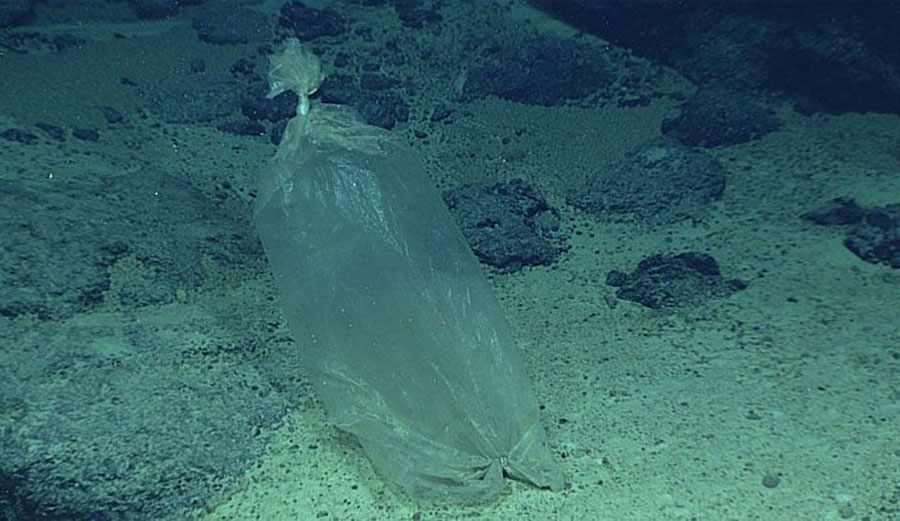One of the most challenging aspects of assessing and mitigating environmental harm from human use of ocean resources is that, as impacts propagate through the marine environment, human activities may not only remove existing habitats, but, in some cases, create entirely new ones. In offshore oil and gas exploration, cuttings piles can become home for newly settled species and oil rigs themselves can become artificial reefs, attracting and aggregating large, diverse marine communities. In the most extreme cases, human-made structure that are heavily colonized by marine species are left on the seafloor. Even with oil rigs that would otherwise be slated for removal, disrupting those communities could cause more lasting harm to the seafloor than allowing an ecosystem to grow on an artificial substrate.
Over the past half century, garbage has frequently become home to a variety of wildlife, both onshore and in the sea. Famously, debris from several natural disasters have been traced to their time of origin based on known growth and community succession rates of the species that have colonized them. A far more localized example exists when opportunistic animals like hermit crabs choose discarded trash to replace their shells.
A recent study from an international team led by researchers from Xiamen University, indicates that the same phenomenon is happening with ocean plastic–macroplastic waste that settles on the seafloor is becoming habitat for deep ocean species.
The research team recovered several large pieces of macroplastic from a debris dump in the Xisha Trough and determined that species abundance at the dump site was an order of magnitude higher than the surrounding deep benthos. Novel ecosystems are forming on plastic macrolitter. These communities were exceptionally biodiverse compared to the general deep background, containing fungi, scyphozoans, brachiopods, and juveniles from several other taxonomic groups. Gastropods were using sheets of discarded plastic as spawning and nesting grounds.
The research team determined that plastic debris dumps were acting as biodiversity hotspots.
The deep ocean has so frequently been used as a dumping ground, that in the recently published Natural Capital and Exploitation of the Deep Ocean, “space”–the physical volume of the ocean in which objects can be stored or discarded–was identified as one of the critical resources that the deep sea provides. In a recent review attempting to synthesize the current state of knowledge surrounding marine litter, an international team determined that the Messina Strait, which runs between the island of Sicily and the Italian mainland, has the largest marine litter density in the world and that without dramatic changes to how waste is handle, the mass of trash in the ocean could reach 3 billion metric tons. Even so, our understanding of how trash impacts the seafloor is limited. Our garbage often precedes human observation of the seafloor by decades.
Microplastics in the water column and floating at the surface have received the lion’s share of ocean plastic research in the last few decades. Massive, iconic phenomena like the Great Pacific Garbage Patch, largely composed of microplastics in the water column as well as large floating debris, garnered international attention and ongoing efforts to devise both pragmatic and impractical cleanup solutions. Litter on the seafloor, of both macro- and microscopic varieties, is the least studied of all the marine plastics, due in large part to the fact that the vast majority of seafloor is inaccessible to all but the most well-resourced deep-sea research and exploration efforts.
This litter largely occurs in areas beyond national jurisdiction, making discovery and research even more complex.
Once again, this provides another opportunity for deep-sea mining contractors to contribute to scientific understanding beyond industry impacts by providing baseline data on deep litter and opportunistic observations of how deep ocean trashfalls shape and reshape the ecology of the seafloor.
Featured Image: Crabs and shrimp occupy a trash bag at the bottom of the sea. Photo via NOAA/Ocean Exploration Trust.


